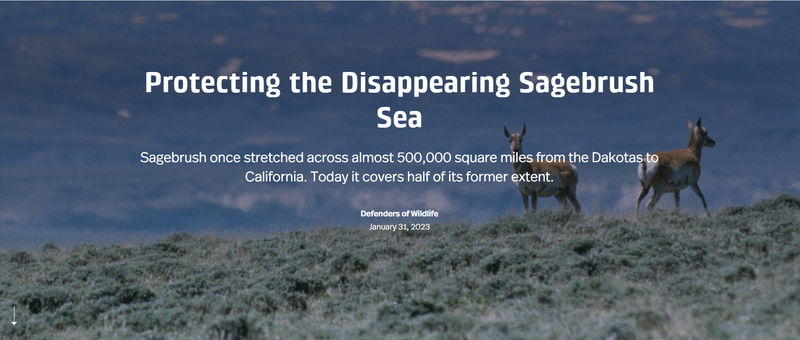


Sagebrush once stretched across almost 500,000 square miles from the Dakotas to California. Known for its expansive views and big skies, the Sagebrush Sea has almost endless green-olive sage and purple lupine that stretch to the horizon. The Sea is a complex vegetation network-a rich, diverse mix including sagebrush, bunchgrasses and wildflowers.Together these native plant communities sustain a myriad of animals including burrowing owls, bison, golden eagles, and mountain lions. They provide crucial winter ranges and migration corridors for pronghorn, mule deer, and elk. Some, such as the sagebrush sparrow, Gunnison sage-grouse, and pygmy rabbit, can survive nowhere else. All told, more than 350 species of plants and animals associated with the sagebrush sea are considered to be of conservation concern.This means that they are declining or rare and are causing biologists to be concerned about their future viability. Learn more about the Sagebrush Sea in our storymap!